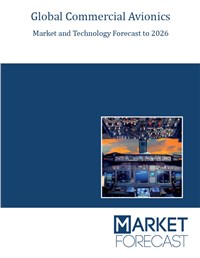Global Commercial Avionics market is estimated at around USD 80 Billion and is expected to grow to USD 116 Billion by 2026 at a CAGR of around 4.14%. The cumulative market is expected to surpass USD 800 Billion during the forecast period. Fixed wing is expected to contribute to majority of the market. The report has been segmented into Fixed Wing, Rotary Wing, Business Jets and Commercial Unmanned Platforms. The Fixed wing segment is further classified into Communication Systems, Monitoring Systems, Flight Control Systems, Weather Systems, Aircraft Collision Avoidance Systems and Flight Management Systems.
The key drivers of the market include upgrades to synchronise to the Global Airspace initiatives, Cost Optimization, Increased In- Flight Connectivity and the overall increase in passenger traffic. Airlines are investing into upgrading the In- Flight Connectivity to enhance passenger experience, a clear example is of Turkish Airlines, wherein the airline has opted to line fit 50 of its future fleet with personalized home theatre experience. The fleet is expected to be 25 B787-9s and 25 A350-900s which is expected to be delivered by June 2019.
The key challenge includes the interoperability of the existing systems and the retro fit systems in the existing aircraft families specifically for initiatives driven by the FAA and EU. This has been a key challenge for the overall sector.
A competitive strategy model which affects the existing market has been analysed and cover in the report in the Porter’s five forces model apart from the PESTLE which has been covered in the report.
The report “Global Commercial Avionics Market Forecast to 2026” provides historical data and forecast until 2026. The market forecast section provides segment wise forecast across each of the segments, regions and fitment.
An in-depth Scenario analysis has been covered in the report which includes three scenarios and their impact on each of the segments have been covered in the report in the chapter Scenario Analysis.
The in- depth coverage of the report across its sections are:
- Market Overview: This section covers definition of the market and the current and the future technologies. The section also deals with the Regional demand and supply and future integrated airspace programs.
- Market Analysis: This chapter deals with the key drivers, restraints and challenges of the market and their expected effect on the market. The existing regulations are expected to drive the market in both the retro fit and the line fit market.
- Supplier Mapping: In the chapter titled “Avionics Supplier Mapping”, the individual programs and the key suppliers across sub components in the program have been mapped. The suppliers have been mapped for 14 programs.
- Market Forecast: The market forecast section has four sub segments which are market forecast by region, by Fitment, by Sub System and by End User. The forecast period is from 2018-2026.
- Scenario Analysis: A detailed scenario analysis has been captured as a part of this chapter, three scenarios have been considered. The assumptions of each scenario and the expected market impacts have been covered in this chapter.
- Opportunity Analysis: This chapter covers the high growth markets and the areas the companies should be focussing on to maximize the revenues. The opportunities have been classified as High, Medium and Low Opportunities.
- Company Profiles: Detailed Company profiling have been covered for the key players in the market, the company profiles include company information (Including products and Services), Company Financials, Contracts won, alliances and a detailed SWOT of each of companies.
Scope
The market is expected to reach around USD 116 Billion in 2026, the highest growing market is expected to be the commercial unmanned platforms. The report also covers the Global initiatives by various regions for the connected airspace initiative.
The deadlines which are fixed by FAA and other aviation bodies for implementation of various Air Navigation programs have also been dealt with in detailed.
The report also covers program wise mapping of the key suppliers in the commercial avionics market. The Chinese program which is the COMAC 919 is also covered as a part of the supplier mapping.
PEST analysis have also been covered as a part of the report, the major companies in the Commercial Avionics Market have been profiled and a detailed SWOT of each company has been covered as a part of the report.
Reasons to buy
- Prospective Investors into the Commercial Avionics market could get a detailed understanding of the market dynamics of the market
- A clear view of the market drivers, restraints and challenges which are expected to affect the market in the next few years.
- Understand the key technology trends in the market
- Supplier mapping section gives a clear view of the major suppliers across each program and their specific components
- Focus on high growth markets and develop efforts in those markets
- Understand the competitor dynamics with respect to the recent alliances, and financial information




